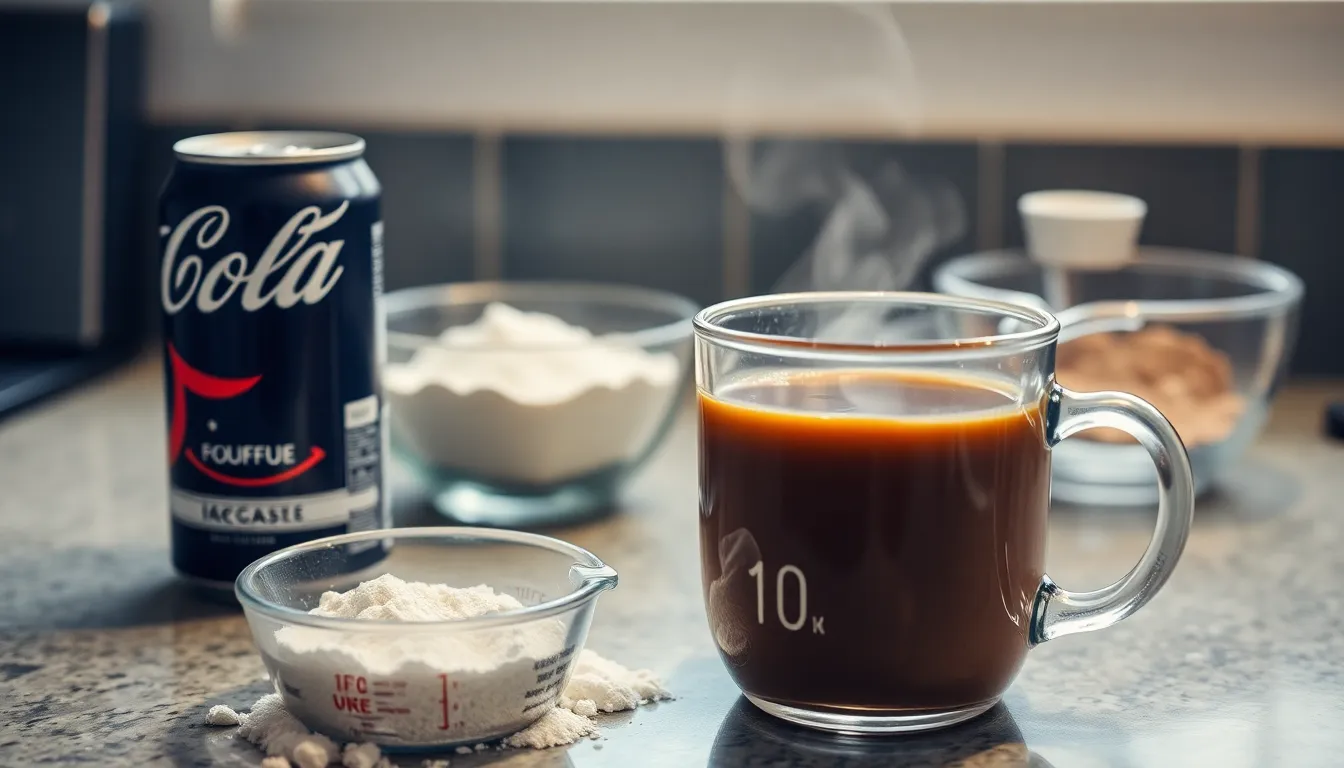When it comes to measurements, 12 ounces can feel like a riddle wrapped in an enigma. Is it a hefty cup of coffee? A pint of beer? Or perhaps the perfect amount of ice cream to avoid judgment? Understanding how much 12 ounces really is can save you from culinary catastrophes and awkward social situations.
Table of Contents
ToggleUnderstanding Ounces
Ounces represent a unit of weight and volume used in various measurement systems. Understanding ounces provides clarity in cooking and serving sizes.
Definition of Ounces
An ounce equals approximately 28.35 grams in weight. Liquid measurements define one fluid ounce as roughly 29.57 milliliters. The term “ounce” originates from the Latin word “onzia,” which indicates its historical significance. Different contexts influence the interpretation of ounces; for instance, dry ounces measure solid ingredients, while fluid ounces apply to liquids. Knowing the difference ensures accuracy in recipes and beverage servings.
Conversion to Other Units
Converting ounces to grams involves multiplying by approximately 28.35. For fluid ounces to milliliters, one ounce equals about 29.57. Common conversions include 12 ounces translating to roughly 340.19 grams or 355.24 milliliters. Familiarity with these conversions aids precision in cooking, especially when dealing with international recipes. When measuring ingredients, accurate conversions ensure consistent results and prevent culinary errors.
Practical Applications of 12 Ounces

Understanding 12 ounces helps in various daily situations. This measurement is standard in both cooking and product sales.
Common Items That Weigh 12 Ounces
Numerous items weigh 12 ounces, making this measurement familiar. A common 12-ounce item includes a can of soda, which provides a typical serving size. Additionally, a standard coffee mug often holds around 12 ounces of liquid. Packaged food items, like ground coffee or protein powders, frequently come in 12-ounce containers. Retail products benefit from this measurement as consumers rely on it for portioning.
Importance in Cooking and Measuring
Precise measurements are crucial in cooking and baking. Using 12 ounces of an ingredient ensures consistency in recipes. Many ingredients—like flour, sugar, or liquids—translate to this measurement for accuracy. Converting from volume to weight can prevent culinary mishaps when following recipes. Recognizing the distinction between dry ounces and fluid ounces minimizes mistakes in the kitchen. Accurate measurement results in successful culinary outcomes, particularly with international recipes.
How Much Is 12 Ounces in Different Contexts
Understanding how 12 ounces translates across various contexts helps clarify its practical implications in daily life.
Liquid Measurements
In liquid measurements, 12 ounces equals approximately 355.24 milliliters. Commonly, many beverages, including sodas and juices, come in this size. A standard bottle of water also often contains 12 ounces. Knowing that 12 ounces of liquid can fill a regular coffee mug can aid in accurate consumption tracking. It’s essential to note the difference between fluid ounces and weight ounces to avoid confusion in recipes. For example, pouring 12 ounces of broth into a pot aligns with typical cooking methods.
Dry Ingredients
For dry ingredients, 12 ounces converts to about 340.19 grams. Common kitchen staples may vary in volume and weight, often leading to misunderstandings. A 12-ounce package of flour represents a significant contribution to baking recipes. Likewise, many baking ingredients, like sugar or oats, may also weigh the same. Accuracy in these measurements ensures successful outcomes when preparing dishes. Understanding this conversion allows for precision in culinary efforts, especially when following international recipes that may utilize different measurement systems.
Tips for Accurate Measurement
Accurate measurement ensures culinary success. Various tools and techniques assist in achieving the right amount for recipes.
Tools for Measuring 12 Ounces
Using a digital kitchen scale provides precise weight measurements. Liquid measuring cups are ideal for measuring fluid ounces. Graduated cylinders also offer accuracy for liquids. For solid ingredients, standard measuring cups work well, but a scale remains superior for precision. Consider measuring spoons for smaller amounts when adjusting recipes requires it.
Common Mistakes to Avoid
One common mistake involves confusing fluid ounces with dry ounces, leading to significant errors in recipes. Measuring ingredients packed too tightly can result in excess weight. Another error is neglecting to level off dry ingredients, which affects the final outcome. Ignoring the temperature of ingredients also impacts accuracy, especially in baking. Lastly, relying on inaccurate or old measuring tools can compromise results.
Understanding how much 12 ounces is can significantly impact cooking and daily life. This measurement plays a crucial role in achieving consistent results in recipes and avoiding misunderstandings in social settings. By distinguishing between fluid ounces and dry ounces, individuals can ensure they’re using the correct amounts for their ingredients.
Utilizing appropriate measuring tools like digital scales and liquid measuring cups can enhance accuracy. Recognizing common pitfalls in measurement techniques can further aid in achieving culinary success. Ultimately, grasping the nuances of 12 ounces empowers individuals to navigate both cooking and product usage with confidence.









